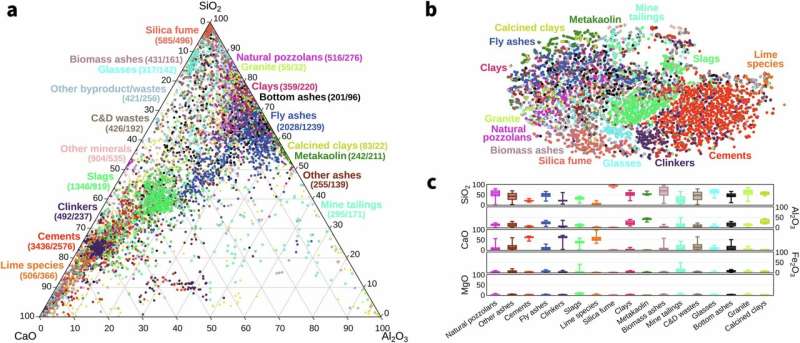
For weeks, the lab whiteboard was filled with notes, sketches, and chemical symbols as a team from the Olivetti Group and MIT’s Concrete Sustainability Hub tackled a pressing challenge: how to reduce cement usage in concrete to cut costs and emissions.
This issue isn’t new; materials like fly ash from coal production and slag from steelmaking have been used to partially replace cement in concrete for some time. However, the production of these materials is struggling to keep up with the demand as industries strive to minimize their environmental impact. This has intensified the search for alternative materials. The researchers found that the real hurdle was not the lack of viable options, but rather the overwhelming number to sift through.
On May 17, the team, led by postdoctoral researcher Soroush Mahjoubi, published an open-access article in Communications Materials detailing their findings.
“We figured out that AI could help us move forward,” Mahjoubi explains. “There’s an enormous amount of data about potential materials—hundreds of thousands of research papers. Manually going through them would take countless lifetimes, and by then, new materials would continue to emerge.”
Using AI tools similar to the chatbots we interact with daily, the team developed a system that analyzes and organizes potential materials based on their physical and chemical attributes.
“The first key factor is hydraulic reactivity. Cement, the binder in concrete, hardens in the presence of water, so any substitutes need to exhibit similar reactions,” Mahjoubi clarifies.
“The second factor is pozzolanicity. This occurs when a material interacts with calcium hydroxide, a byproduct of mixing cement with water, to enhance the strength and durability of concrete over time. We must strike a balance between hydraulic and pozzolanic materials for optimal performance.”
By analyzing extensive scientific data and over a million rock samples, the team categorized potential materials into 19 types, including biomass, mining waste, and demolished construction materials. They discovered a wealth of suitable materials available worldwide, many of which could be integrated into concrete simply by grinding them. This approach allows for cutting emissions and costs without requiring extensive processing.
“Some intriguing options for replacing cement include ceramics,” Mahjoubi highlights. “Old tiles, bricks, and pottery—all these materials can demonstrate high reactivity. We’ve seen similar practices in ancient Roman concrete, where ceramics were incorporated to enhance waterproofing. I’ve had engaging discussions about this with Professor Admir Masic, who studies ancient concrete here at MIT.”
Exploring everyday materials like ceramics and industrial waste like mine tailings showcases how concrete can contribute to a circular economy. By finding and reusing materials that would typically end up in landfills, researchers can give them a new purpose in our infrastructure.
Looking ahead, the research team plans to enhance their AI framework to assess even more materials while experimentally validating some of the top candidates.
“AI tools have propelled this research forward rapidly, and we’re excited to see how ongoing advancements in large language models will facilitate our next steps,” says Professor Elsa Olivetti, a principal investigator at the CSHub and a member of MIT’s Materials Science and Engineering Department.
“Concrete is fundamental to our built environment,” adds Randolph Kirchain, co-author and CSHub director. “By leveraging AI tools for material design, we aim to assist the industry in building more sustainably without compromising strength, safety, or longevity.”
In addition to Mahjoubi, Olivetti, and Kirchain, co-authors of the study include MIT postdoc Vineeth Venugopal, Ipek Bensu Manav, Ph.D., and CSHub Deputy Director Hessam AzariJafari.
For more details:
Soroush Mahjoubi et al., Data-driven material screening of secondary and natural cementitious precursors, Communications Materials (2025). DOI: 10.1038/s43246-025-00820-4
If you would like to see similar Tech posts like this, click here & share this article with your friends!

